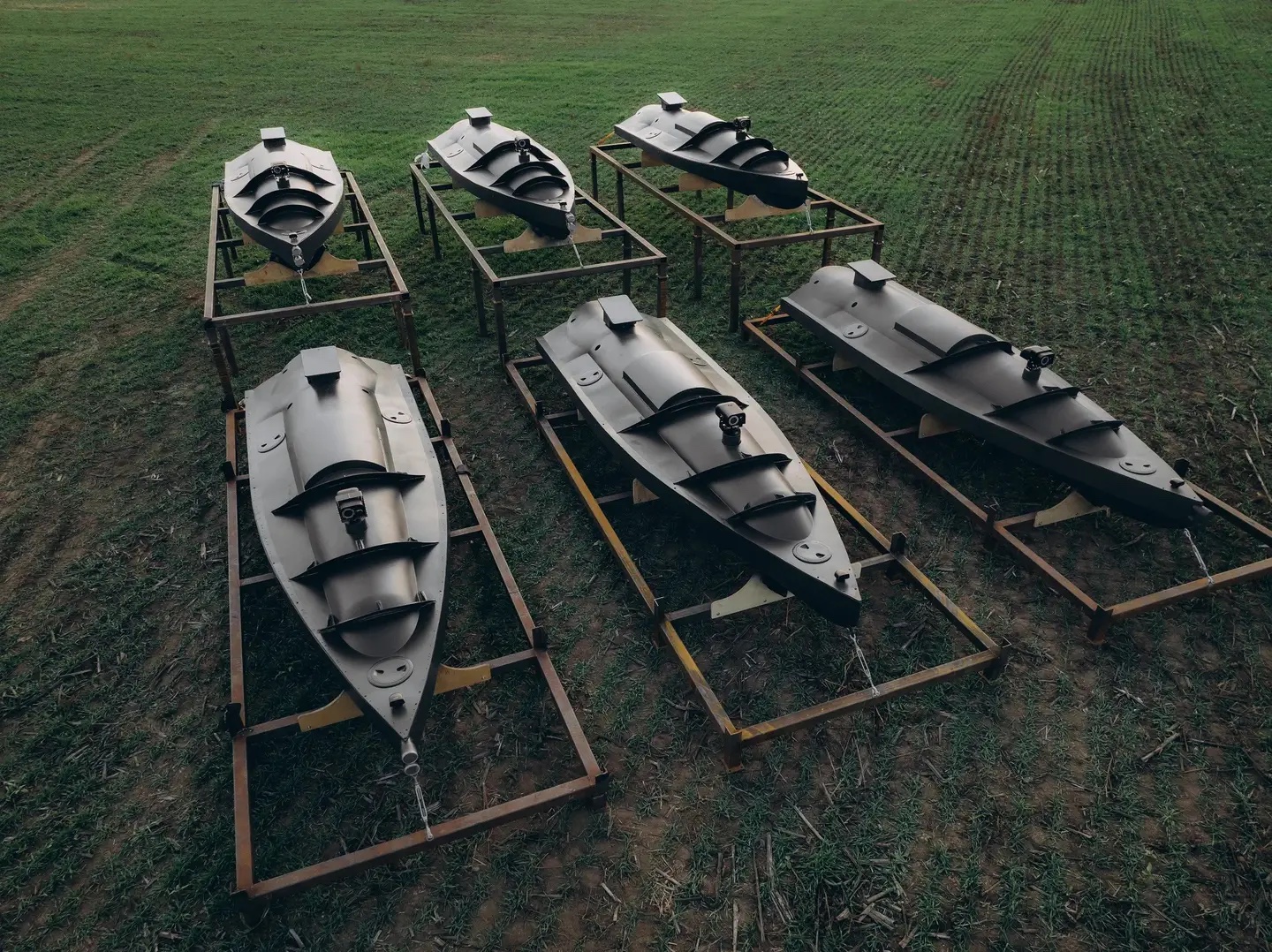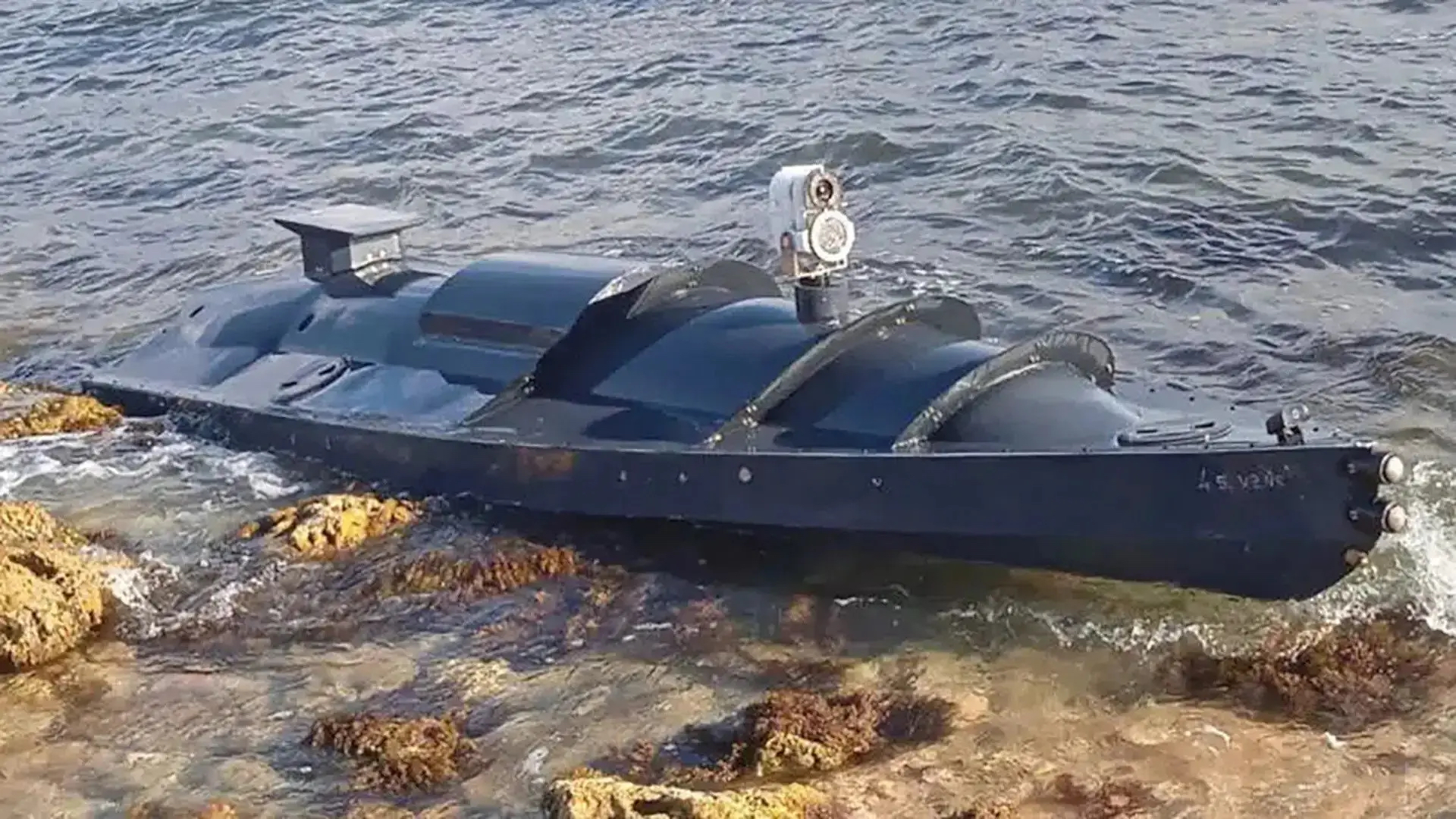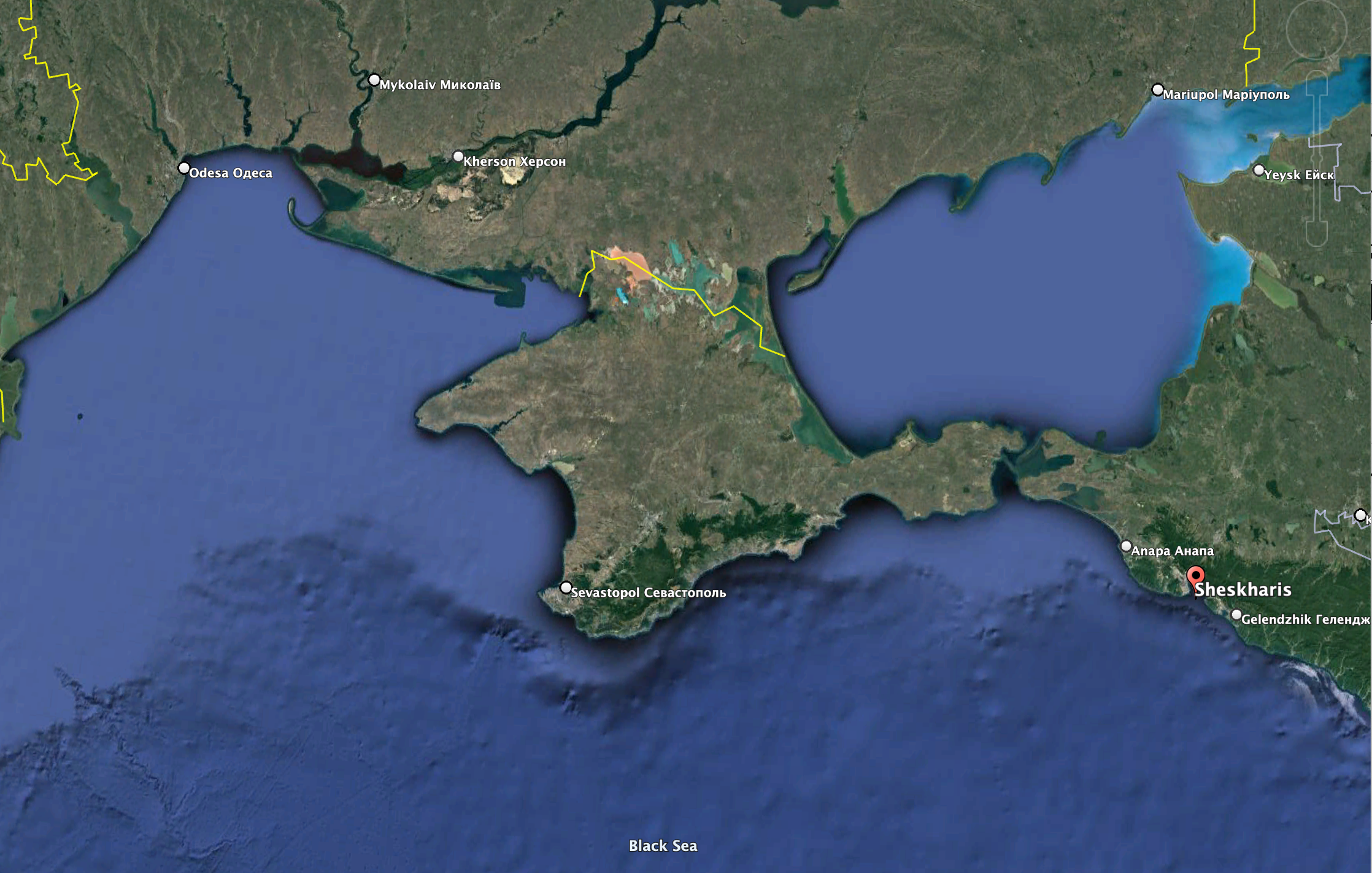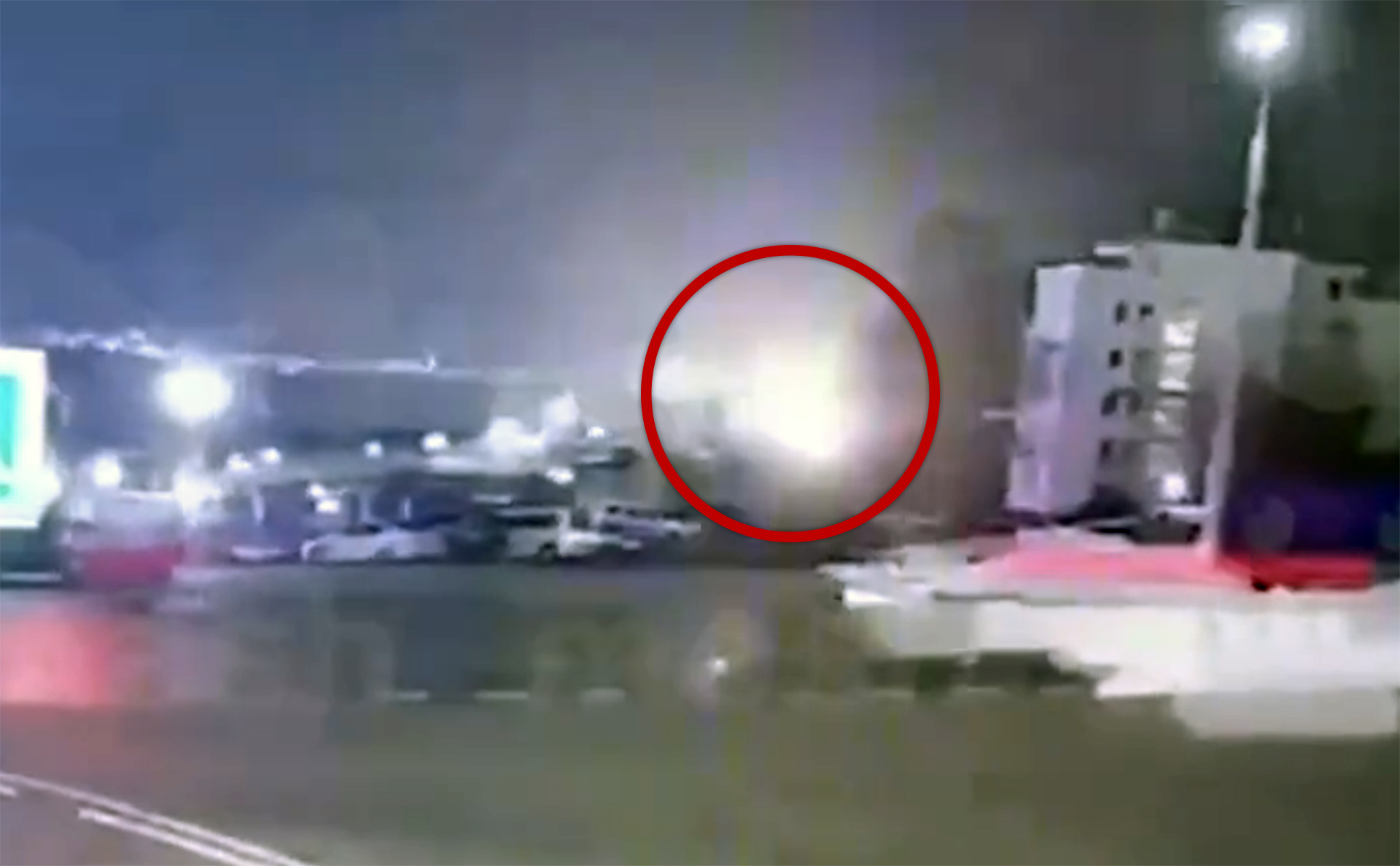Unconfirmed footage of what is claimed to be a Ukrainian ‘kamikaze’ drone attack on Sheskharis Harbor in Russia’s Black Sea port of Novorossiysk has been published online by Russian media outlets.
The video appears to be from a closed-circuit television camera system that is trained on the harbor over a road. Cars can be seen driving across the frame before an explosion occurs pierside on the far side of the harbor.
It is impossible to see what sort of craft was used in the attack. A second clip — which comes after the first in the video embedded below — shows another angle of the blast.
Ukraine already has deployed the low-slung drone boats, which resemble kayaks and have a claimed range of about 500 miles, in an unprecedented attack on the Russian Navy’s base in Sevastopol on the occupied Crimean Peninsula last month. Through a crowdfunding campaign, Ukrainian authorities hope to raise money enough to buy 100 of the black uncrewed surface vessels.

The boats are propelled by jet drives similar to those that power personal watercraft. They sport multiple camera systems, long-range communications, and bow-mounted impact detonation sensors. The War Zone examined the drone boats’ capabilities in depth in this previous piece.
It is not clear what the drone boat, if that was what was depicted in the video, struck if anything. With a maximum speed of up to 50 miles per hour – very fast for a surface vessel – and a combat payload of 400 pounds, the boats are lethal adversaries for Russian surface ships and port infrastructure. One of the boats was first seen when it washed ashore in Crimea in September.

Ukraine claims previous attacks made with the drone boats damaged at least three Russian warships, but those claims are still unproven. Regardless, they have sent a chilling effect through Russia’s Black Sea Fleet operations and additional defenses have been installed in Sevastopol, Crimea, where the fleet is headquartered. But Sheskharis is far from Sevastopol and even farther from Ukrainian-held territory, for that matter. Unless launched via sea, the boat would have had to travel nearly 400 miles to reach its target. If this was the case, it means ports that were safe havens for Russian marine traffic are now under direct threat of maritime attack. This would mean the drone boats are now joining Ukraine’s ‘Alibaba drones’ as long-range weapons capable of striking well into Russian territory.

Before we get into the many other details of how the war progressed over the past 24 hours, be sure to visit our previous rolling coverage of the conflict here.
The Latest
William A. LaPlante, the Pentagon’s chief weapon buyer, on Nov. 18 chaired the second meeting of the National Armaments Directors (NADs) from member nations of the Ukraine Defense Contact Group (UDCG) in Brussels. He was joined by NADs and representatives from 45 nations, the European Union, and the North Atlantic Treaty Organization (NATO). Participants discussed accelerated sourcing, production, procurement, and sustainment of capabilities critical to Ukraine’s defense against Russia’s unlawful invasion, according to a statement from Department of Defense Spokesperson Lt. Cmdr. Tim Gorman.
Discussions among the military-industrial leaders focused on providing Ukraine with four capabilities:
- ground-based, long-range fires
- air defense systems
- air-to-ground capabilities
- sustainment support.
“In each area, the U.S. delegation and international partners shared progress toward mapping current global production capacity of key capabilities and component parts, and identifying associated supply chain and production constraints,” Gorman said in a statement. “The discussion set the stage for member countries to collaborate on increasing production and identifying opportunities to create interoperability between systems. In addition, the NADs discussed building sustainment capacity in Ukraine, including forward repair activity, access to spares, and other sustainment enablers.”
Given the relatively large amount of ammunition either delivered or on offer to Ukraine through the past nine months of conflict, LaPlante noted “significant national-level investment and support to countries’ respective industrial bases, as well as multi-national coordination to strengthen defense production and sustainment capacity.”
NADs discussed innovative solutions to collaborate at the multi-national level, including mechanisms to aggregate demand for certain capabilities, establish international funds to invest in production and procurement, identify co-production opportunities with the Ukrainian defense industrial base, and provide additional sustainment and maintenance support to international coordination centers. NADs agreed to reconvene in early 2023 to share progress on these and other initiatives, Gorman said.
Back to the conflict, Russian forces conducted yet another massive wave of missile strikes throughout Ukraine on Nov. 17, according to the Institute for the Study of War’s most recent assessment of the conflict. “Russian forces in eastern Kherson Oblast are likely partially vulnerable to a Ukrainian interdiction campaign,” the ISW assessed. The think tank’s latest maps of the frontlines show both sides holding relatively stable positions as winter set in on the country.
Winter threatens a new wrinkle for both armies in the field. Snow fell for the first time this year on Nov. 18, as seen in the video below.
The cold weather presents an especially tough challenge for poorly equipped Russian conscript troops, some of which appear to be sheltering in makeshift tents made from plastic sheeting strung between trees.
Meanwhile, Ukrainian forces continue to receive copious amounts of weapons and ammunition from NATO supporters. Most recently, Slovakian Defense Minister Jaro Nad confirmed a seventh Zuzana 2 self-propelled howitzer arrived in Ukraine on a flatbed truck.
As they explore territory liberated from occupying Russian forces, Ukrainian troops continue to find physical reminders of combat from months past, like the twisted and almost unrecognizable remains of a Russian Ka-52 attack helicopter that was shot down when Russian forces still occupied the right back of the Dnipro River, in Kherson Oblast. The attack helicopters have borne the brunt of Russian rotorcraft casualties during the war.
Ukrainian Soldiers of the 121st Territorial Defense Brigade found this huge, apparently out-of-service Russian 2S19M2 Msta-SM2 152mm self-propelled artillery cannon in Kherson Oblast.
Ukrainian forces also found a Russian 2S23 Nona-SVK self-propelled mortar in better physical shape and were able to press it into service.
Elsewhere, Russian troops publicized the destruction wrought by a Guided Multiple Launch Rocket System (GMLRS) M30E1 Alternate Warhead, which is basically a precision-guided 200-pound shotgun shell packed with 160,000 tungsten balls. Those fragments scatter when they explode above a target, firing them through everything in their path from engine blocks to tires to windshields to human flesh, as can be seen in the video below.
Here we see what the M31’s unitary warhead can do in terms of extreme accuracy.
We also got a good look at a T-64 in action.
The Polish government decided to disallow Russian foreign minister Sergey Lavrov to enter Poland for the Organization for Security and Cooperation in Europe (OSCE) ministerial meeting in Lodz scheduled for Dec. 1-2.
That’s it for now. We will update this post in any major news that happens before our next update.
Contact the author: Dan@thewarzone.com
